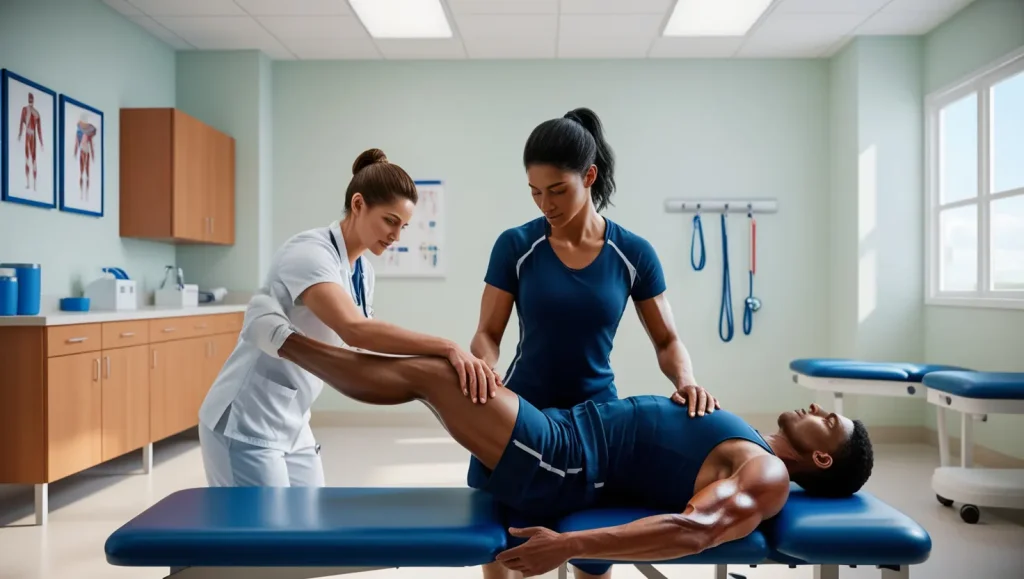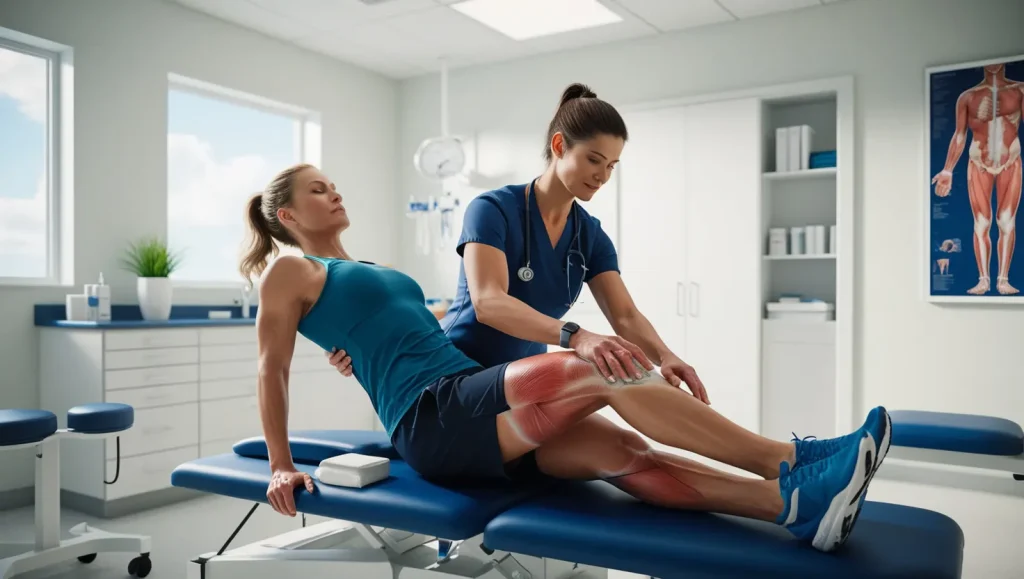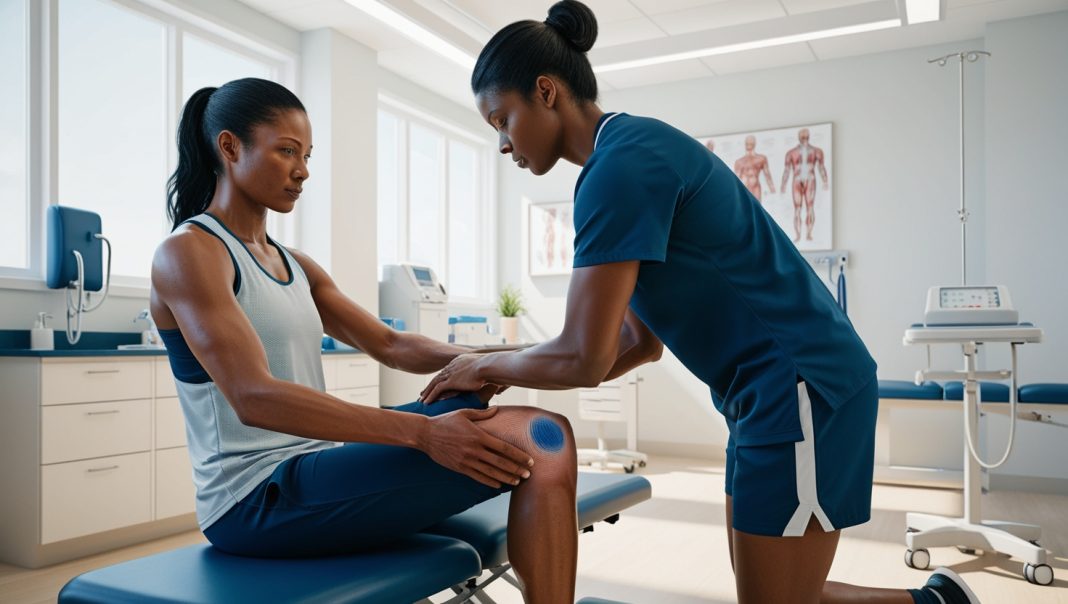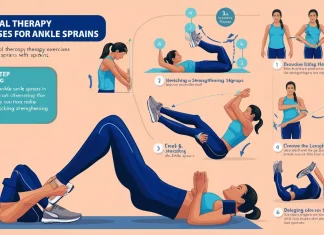Introduction
What is Physical Therapy for Sports Injuries?
Physical therapy for sports injuries is a specialized healthcare approach focusing on helping athletes and active individuals recover from injuries. It combines a variety of treatment methods, from manual therapy to exercise-based rehabilitation, tailored to restore functionality and prevent future damage. Let’s dive into how it works and why it’s a game-changer for those who sustain sports-related injuries.
Importance
Why Physical Therapy is Essential for Sports Injuries
Getting back in the game quickly is important, but doing so without aggravating an injury is even more crucial. Physical therapy plays a vital role in both recovery and prevention, ensuring that injuries don’t sideline athletes longer than necessary. Through a targeted approach, therapists not only accelerate recovery but also strengthen areas vulnerable to repeat injuries.
Types of Sports Injuries
Common Types of Sports Injuries
Sports can lead to numerous injuries, each requiring different therapeutic approaches. Some of the most common include sprains, strains, fractures, and tendon injuries. Each type of injury responds uniquely to therapy, which is why customized treatment is key.

How Physical Therapy Helps
Benefits of Physical Therapy in Sports Injury Recovery
Physical therapy addresses the root cause of pain and dysfunction. Whether through improving muscle strength, enhancing joint mobility, or offering pain relief, it equips athletes with tools to regain control. Furthermore, physical therapy promotes long-term recovery, reducing the risk of re-injury and allowing athletes to maintain peak performance.
Stages of Physical Therapy
Initial Consultation and Assessment
The recovery journey starts with an in-depth evaluation. Physical therapists assess the extent of injury, current pain levels, and limitations to develop a personalized treatment strategy.
Personalized Treatment Plan Development
Based on the assessment, therapists create a detailed plan that specifies therapeutic techniques, exercises, and recovery timelines.
Active Therapy and Mobility Work
Active therapy involves exercises designed to enhance mobility, strength, and flexibility, helping the athlete restore lost movement and functionality.
Specific Physical Therapy Techniques
Manual Therapy Techniques
Manual therapy encompasses hands-on methods, such as joint mobilizations and soft tissue techniques, to reduce stiffness and improve flexibility.
Therapeutic Exercises for Recovery
Therapeutic exercises are targeted movements that rebuild strength and stability in the injured area. These exercises not only aid recovery but also foster resilience in surrounding muscles and joints.
Strengthening and Flexibility Exercises
Strengthening Exercises for Recovery
Strengthening exercises focus on fortifying muscles that support the injured area. For instance, an athlete recovering from a knee injury may work on their quadriceps and hamstrings.
Flexibility and Mobility Exercises
Flexibility exercises are crucial for athletes who need full movement ranges in their sports. These exercises focus on gradually extending the muscles and tissues around the injury to restore function without pain.

Pain Management Techniques
Pain Management Strategies
Many athletes require additional help to manage pain during recovery. Physical therapists use techniques like ice and heat therapy, electrical stimulation, and ultrasound to reduce pain and promote healing.
Rehabilitation Process
Importance of Gradual Rehabilitation
The rehabilitation process is carefully structured to avoid setbacks. A gradual approach ensures the athlete doesn’t return to their sport too quickly, minimizing the risk of re-injury.
Mental Aspects of Recovery
Psychological Support in Sports Injury Recovery
Injury recovery isn’t just physical—it’s also mental. Therapists support athletes in building a resilient mindset, helping them stay motivated and positive through the rehabilitation process.
Preventing Future Injuries
How Physical Therapy Helps Prevent Future Injuries
One of the biggest benefits of physical therapy is its preventive aspect. Through strengthening exercises, athletes build resilience in vulnerable areas, reducing the chances of future injuries. Physical therapy teaches them to recognize their limits and adopt safer techniques, a game-changer for long-term athletic performance.
Conclusion
Summary and Importance of Physical Therapy for Sports Injuries
Physical therapy is invaluable for athletes recovering from injuries. From customized recovery plans to psychological support, it ensures comprehensive healing and equips athletes to come back stronger than ever. By prioritizing physical therapy, athletes can ensure they return to their sport not only healed but also better prepared to prevent future injuries.
FAQs
1. How long does physical therapy take for sports injuries?
The duration varies depending on the severity of the injury and the athlete’s progress, typically ranging from a few weeks to several months.
2. Can physical therapy prevent future sports injuries?
Yes, physical therapy can significantly reduce the risk of future injuries by strengthening vulnerable areas and improving technique.
3. Do I need a referral to start physical therapy for a sports injury?
In many places, you can begin physical therapy without a referral, but it’s best to check with your healthcare provider or therapist.
4. Are there any risks associated with physical therapy for sports injuries?
Physical therapy is generally safe, but working with a qualified therapist is essential to avoid aggravating the injury.
5. What should I wear to physical therapy sessions?
Wear comfortable clothing that allows easy movement, and ensure it exposes the injured area if needed (e.g., shorts for knee injuries).


























